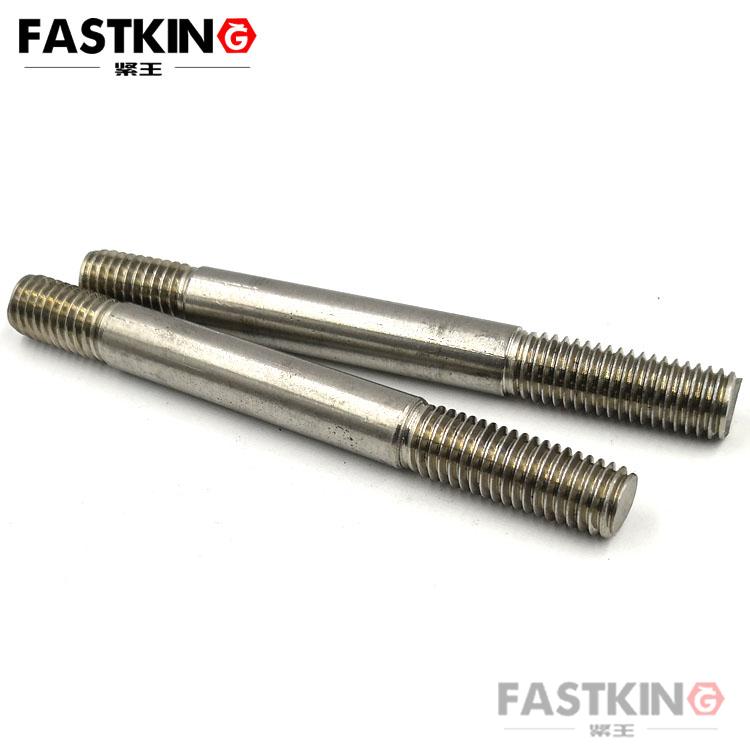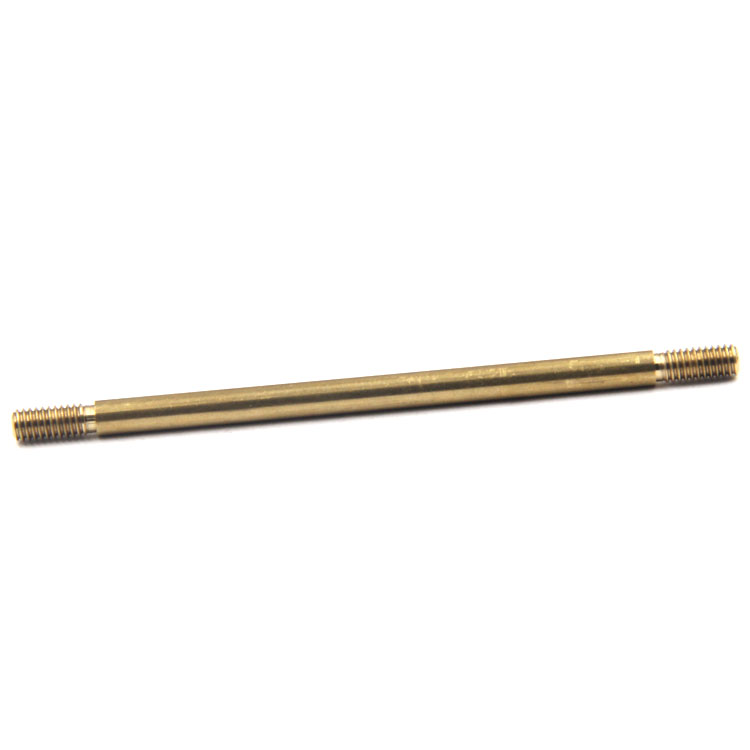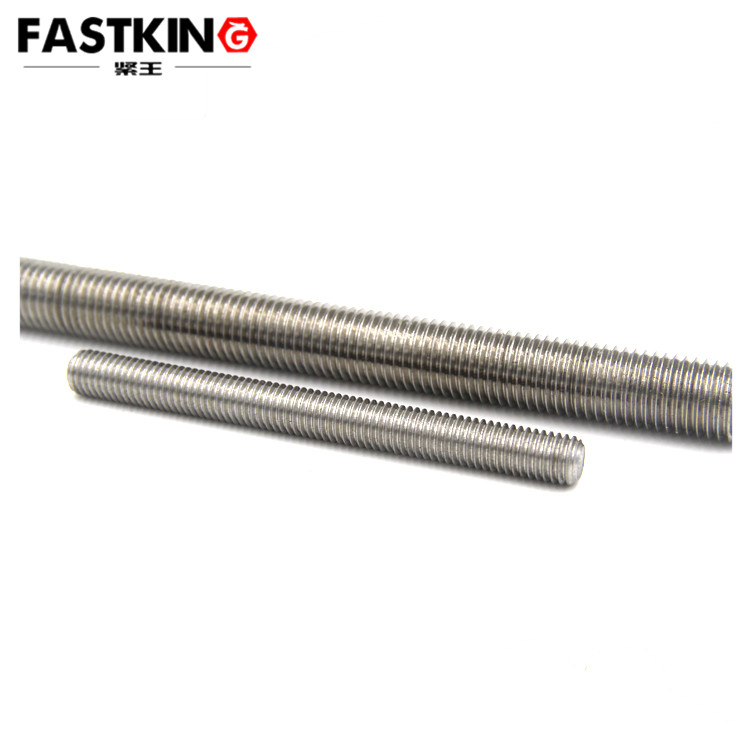- ZHUHAI JIALI HARDWARE CO.,LTD.
- 0760-85885164
Bolt Stud
- Product description:Stud, also known as stud or stud. Used as the same linking function of connecting machinery, the two ends of the stud bolt have threads, and the screw in the middle has thick and thin ones. Generally
bolt Stud
Material: Copper
Scope of application: it is mainly used in large equipment and can support non-standard customization.
The core function of a stud bolt is to achieve the fixed connection of machinery or structures. However, compared with ordinary bolts, it has irreplaceable advantages in specific scenarios. On one hand, when one of the two connected parts is thick and the other is thin, or when it is inconvenient to drill a through-hole in one of the parts, the stud bolt can play a unique role. It only requires pre-processing an internal threaded hole in the thicker part, screwing one end of the stud bolt (usually called the "fixed end") into this internal threaded hole and securing it, then passing the other end (the "connecting end") through the hole of the thinner part, and finally tightening it with a nut to complete a stable connection. This avoids the reduction in structural strength caused by drilling a large-sized through-hole in the thick part. On the other hand, in the connection of equipment that requires frequent disassembly or maintenance, stud bolts can reduce damage to the connected parts: during multiple disassembly operations, only the nut needs to be unscrewed, and there is no need to repeatedly twist the stud bolt itself. This prevents wear between the threads of the fixed end and the internal threads of the connected part due to frequent friction, thereby extending the service life of the parts. In addition, under working conditions with vibration and impact, the stud bolt can form a more stable connection structure through the dual cooperation of the threads at both ends with the nut and the connected parts, reducing the risk of loosening caused by vibration and ensuring connection reliability.

From the perspective of application scenarios, relying on the characteristics of "high strength, easy installation, and adaptability to complex structures", stud bolts are widely used in multiple fields that have extremely high requirements for connection stability. In the mining machinery field, such as the body connection of heavy equipment like crushers and excavators, stud bolts need to withstand huge impact loads and vibrations. Their high-strength thick rod structure can ensure that the equipment does not loosen at the connection during high-intensity operations, thus guaranteeing the normal operation of the equipment. In the bridge and large-scale construction field, the connection between bridge bearings and beam bodies, and the node connection of steel structures in large buildings (such as the butt joint of steel columns and steel beams) often use stud bolts combined with nuts for fastening. Especially in the installation of long-span steel structures and tower cranes, stud bolts can adapt to complex installation angles and high-load requirements, providing support for the overall stability of the structure. In the automobile and motorcycle manufacturing field, the connection between the engine block and cylinder head, and the fixing of key nodes of the chassis frame rely on the precise connection of stud bolts. The choice of thin rods or thick rods needs to be determined according to the load characteristics of the parts to ensure the sealing performance of the engine during operation and the load-bearing capacity of the chassis. In the boiler and pressure vessel field, for the assembly of boiler steel structures and the flange connection of pressure vessels, stud bolts need to maintain a stable connection in high-temperature and high-pressure environments. Their high-temperature-resistant materials and reliable thread cooperation can effectively prevent medium leakage and ensure the safe operation of the equipment.
To enable stud bolts to fully exert their connection performance, correct selection, installation, and material selection are crucial. During selection, three core parameters need to be focused on: first, thread specification and length. The nominal diameter and pitch of the threads at both ends must fully match the matching nut or the internal threads of the connected part (such as specifications like M16 and M20). The total length of the stud bolt should be determined based on the thickness of the connected parts and the installation gap to ensure that the fixed end has a sufficient screwing depth and the connecting end can expose an appropriate length to match the nut. Second, rod type. Choose between thick rods and thin rods according to the load size: thick rods are preferred for high-load and high-impact scenarios, while thin rods can be selected for low-load scenarios that require adapting to gaps. Third, strength grade. Different application scenarios have different strength requirements. For example, mining machinery requires stud bolts with high strength grades (such as 8.8 grade and 10.9 grade), while ordinary light industrial equipment can use products with lower strength grades (such as 4.8 grade) to balance performance and cost. In terms of material selection, carbon steel materials (such as Q235 and 45# steel) are mostly used in ordinary environments, and their strength is improved through heat treatment. In humid and corrosive environments (such as outdoor nodes of bridges and offshore platform equipment), stainless steel materials (such as 304 and 316 stainless steel) or carbon steel stud bolts with galvanized treatment should be selected to prevent rust from affecting connection strength. In high-temperature environments (such as boilers and engines), high-temperature-resistant alloy materials (such as chrome-molybdenum steel) must be used to ensure that the bolts do not undergo plastic deformation at high temperatures.

During the installation process, standardized operations must be followed to ensure the connection effect: first, clean the internal threaded holes and installation surfaces of the connected parts to remove oil stains and impurities, avoiding connection loosening caused by poor thread cooperation or uneven installation surfaces. Second, slowly screw the fixed end of the stud bolt into the internal threaded hole, ensuring that the threads are aligned. Avoid forcing the stud bolt into the hole to prevent thread damage. The screwing depth must meet the design requirements (usually 1.5-2 times the nominal diameter of the thread). Finally, after passing through the other connected part, tighten it with a nut and control the appropriate tightening torque. Excessively low torque may lead to loose connections, while excessively high torque may cause tensile deformation of the bolt or thread damage. It is recommended to determine the tightening torque according to the strength grade and specification of the stud bolt, with reference to industry standards or equipment manuals.
Although stud bolts have a simple structure, they play the role of a "key link" in mechanical connections and large-scale structural installation. Through the ingenious design of threads at both ends, they can adapt to connection requirements of different thicknesses and working conditions, providing solid guarantees for the stability of equipment and structures in fields such as mining machinery, bridges, and automobiles. With the development of industrial technology, the materials and processing technologies of stud bolts are constantly upgraded (such as adopting cold heading technology to improve strength and using anti-corrosion coatings to extend service life). In the future, they will be better able to adapt to more harsh working environments and provide reliable solutions for higher-standard connection requirements.


